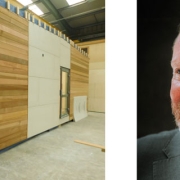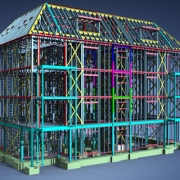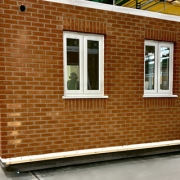Clive Feeney, LHC Group Director
More than 6,000 construction insolvencies are expected in 2023 and construction output is forecast to fall by 3.9%, prompting sector-wide concern around project pipelines and profit margins.
Predictions across the board paint a bleak picture, but more so in the private sector with an expected 38% drop in new housing starts over the next two years. In the public sector there is demand for new social housing and requirement to retrofit existing ‘fuel poor’ social homes to an EPC band C by 2030. However, monetary support was not forthcoming in Chancellor Jeremy Hunt’s Autumn Statement in November last year. There was no mention of funding to improve the UK’s energy-inefficient housing stock – loft insulation and boiler replacement aside – nor reassurance for new social housing provision.
Nonetheless, public sector construction frameworks are offering some shelter from the risks wrought by recession.
As a construction framework provider for the public sector, 2023 will be a busy year for LHC, with five new frameworks set for launch: Asset Safety and Compliance, Refurbishment and Associated Retrofit Works, Energy Efficiency and Decarbonisation, Fire Safety and Supply, and Installation of Aluminium Windows and Doors. The assessment process for the £1.2bn NH3 (Modern Methods of Construction (MMC) of New Homes) framework is also underway, with appointed companies announced in spring.
This makes the prospect of public sector building a more secure prospect of work for this year into 2024.
Why social housing must continue
Our housing stock is ageing; 26 million require retrofit – 4.5 million of which are in social housing.
Building and retrofit must continue in social housing, both to move towards the static 2050 net zero target and protect vulnerable tenants from the rising cost of living. Doing this cost-effectively will be even more important in the coming 12 months. Chancellor Jeremy Hunt placed a 7% cap on the amount social landlords can increase rents for tenants as part of the Autumn Statement. This offers a tough compromise: while providing some relief for residents at the sharp end of the cost-of-living crisis owing to a benefit cap lift and local housing allowance (LHA) freeze, it means housing associations will feel a tighter squeeze.
On the new social housing front, recent Regulator of Social Housing statistics also show just 31,000 social homes were built from March 2021 to 2022. This is almost five times short of the National Housing Federation’s (NHF)145,000 estimated annual requirement in the next decade to meet the population’s needs.
Many housing associations and local authorities LHC works with are using construction frameworks because the benefits, especially in turbulent times, are clear. By working in this way, they find they are able to build stronger, longer working relationships and contacts, have better supply chain engagement, and more pipeline security.
Framework benefits in tough times
The following factors could also be vital in helping MMC contractors – especially SMEs – weather the impending economic storm.
1. Partnering for shared benefits
The collaborative nature of frameworks allows each company to benefit from one another’s insight and expertise. This in turn develops strong contacts and increases the opportunity of appointment to future projects.
2. Pipeline of work
The pipeline of work that can come from using a procurement framework creates greater certainty and helps protect jobs for contractors who may be worried about the future. Traditionally operating on four-year cycles, they offer a more predictable calendar of work.
3. Operational efficiency
SMEs are often too stretched to apply for individual construction projects, while larger contractor bid teams can find they are at the beck and call of new tender applications. Being appointed to a framework creates more consistent work opportunities and reduces the frequency of repeat, lengthy procurements.
4. Long-term pricing and cost aggregation
Frameworks enable all parties to explore a project in detail and more accurately consider costs to reach an agreement up front. While there may be negotiation further down the line at each individual project stage, the long-term nature of frameworks and pricing facilitates improved cost aggregation by providing full visibility from day one. This lessens the financial blow of reduced contractor margins in the case of price rises.
5. Better economies of scale
Having awareness of the client’s longer-term pipeline provides opportunities for contractors to plan work more efficiently, improving their resource planning and identifying cost efficiencies – while driving economies of scale.
6. Shared risk
Using a procurement framework also allows contractors to explore potential risks – including rising costs – and agree how the impacts might be managed between them and the client. Without involving contractors before putting out a tender, clients miss the opportunity for potential risks to be identified, scoped and properly priced into a contract, using projections into the four-year framework lifespan.
To speak to a local contact about our public sector construction frameworks
CLICK HERE













